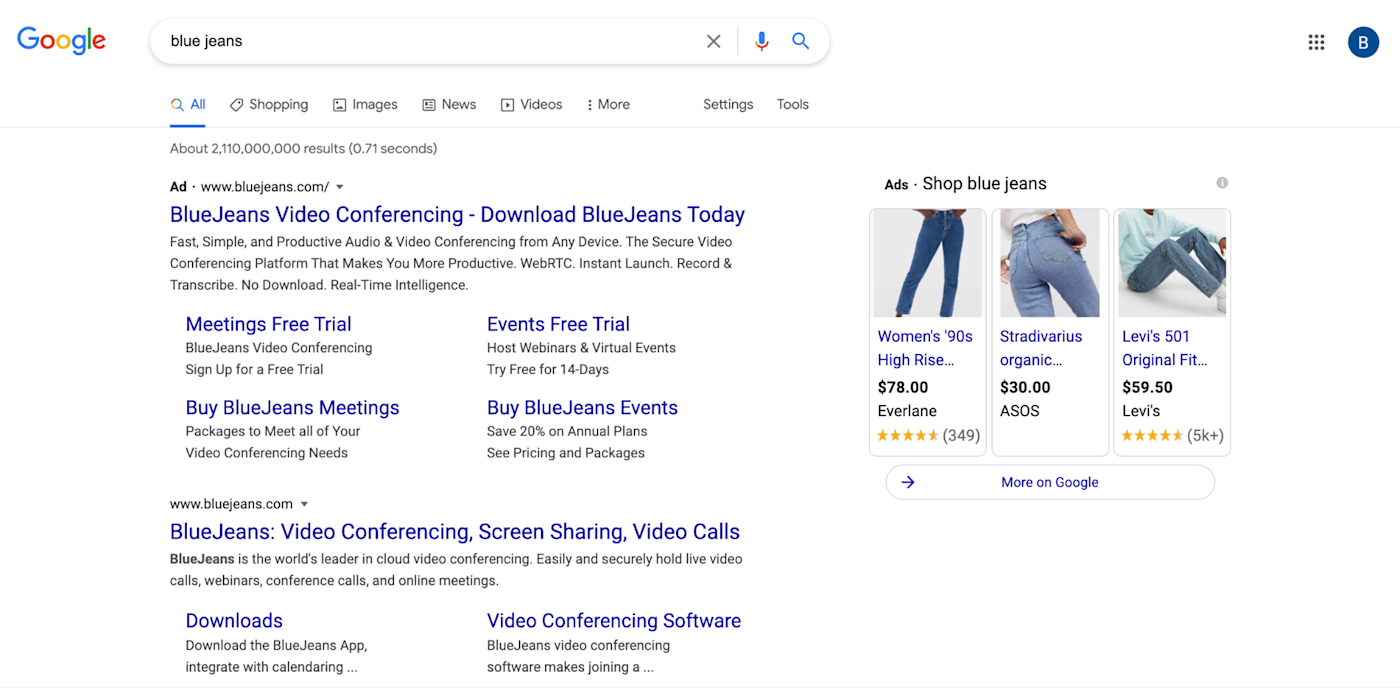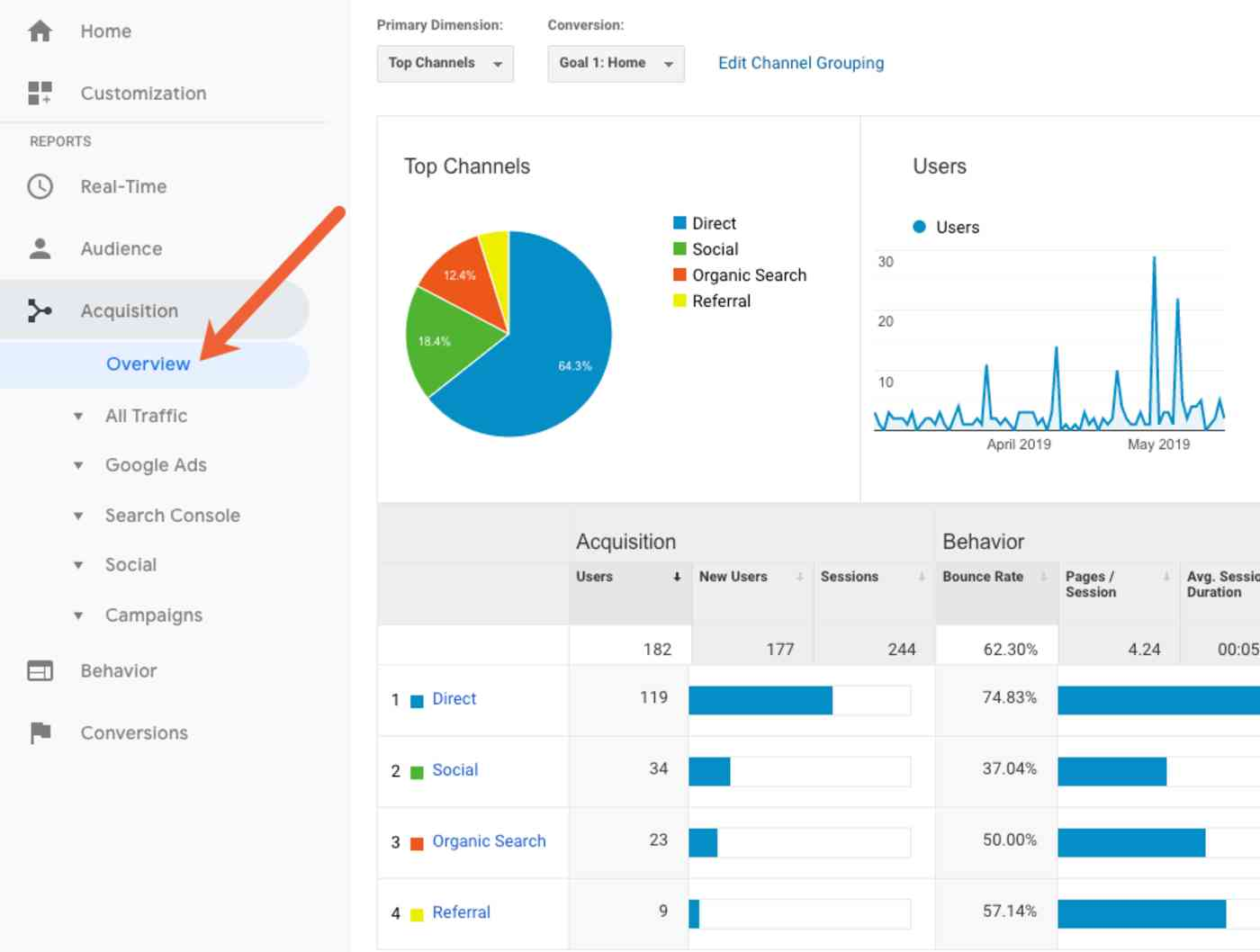There's an embarrassment of riches when it comes to online marketing channels for small businesses. That means a ton of opportunity—but also some tough decisions to make. You can't afford to chase them all, so you need to figure out which ones are right for your business.
As the CEO of SoftwarePundit, I've helped numerous small business owners navigate the complexities of the online marketing world. I've also built marketing campaigns from the ground up—everything from an email channel with 500 million sends per year to a seven-figure paid search channel. I've learned what works and what doesn't (and when there's just no way of knowing).
The five major online marketing channels
It's tempting to experiment with everything at once, but for most websites, one or two marketing channels drive the vast majority of traffic. (This is true for small businesses and large enterprises, actually.) Plus, you probably don't have the resources to go all-in on everything.
The key is to identify the two, maybe three, online marketing channels that are most likely to scale for your business and get started building. Here are the most popular ones, with a little more information to help you make your decision.
Organic search
Organic search is the "free" traffic that websites get from search engines—or, to be realistic, Google. Free is in quotes there because you do need to do some work to get your site to rank. Optimizing your website for organic search is known as SEO (search engine optimization). It involves things like creating high-quality web content, optimizing your web pages, and getting backlinks from other websites.
Content is a game-changer for SEO. Learn more about how to create successful content marketing campaigns, and then dig into the difference between copywriting and content writing.
Because organic search is free(ish), it can have a great ROI. Plus, it's a huge channel: organic search accounts for over 50% of all website traffic. Not surprising, if you think about how many times a day you Google something and then click.
Of course, this means that SEO is very competitive—there are countless other people trying to get the same traffic you are. It also takes a significant amount of time: expect to invest in content for at least three to six months before seeing any gains from SEO.
A deep dive into local search engine optimization (SEO) is well beyond the scope of this article, but there are certain features every local business's website should have these days. Here's how to complete an SEO audit to help grow your business.
Paid search (PPC)
On the other end of the search spectrum, there's paid search: traffic that website owners pay to receive from search engines like Google.
To see a paid search ad, type something into Google, and look for the word "Ad" next to the top results. Those folks paid Google to get themselves there—or, rather, they will pay Google if you click on the link. It's pay-per-click (PPC) advertising.

Companies of all sizes invest in paid search campaigns. It's not as large a channel as organic search, but it's still responsible for a double-digit percentage of website traffic. Plus, it can provide impact immediately (ads will show up at the top of the page right away), as opposed to waiting months and hoping you make it into page one of the search results. Once you learn how to use Google Ads, you can launch a paid search campaign and see traffic from it within 15 minutes.
The downside, of course, is that it's expensive—sometimes prohibitively so. Your competitors are likely also bidding on Google for your target keywords, which means you'll have to outbid them to win clicks. And, if you ever stop your campaigns, your ads will stop running. So investing in paid search doesn't really lead to the development of a competitive advantage, but it can give you a quick boost in traffic, if that's what you need.
For more on the nuances of SEO and PPC, here's a guide for how to choose which is right for your business.
Social media
Facebook, Instagram, Twitter, and Pinterest can be huge boons for small businesses. They serve as touchpoints where your customers can initiate conversations, they help you build your brand identity, and having up-to-date social media profiles helps your business build credibility.
Here's how to know which social media platform is best for your business.
The main downside is that it can be hard to funnel traffic from the social platform to your own website. For example, you might acquire thousands of followers on Instagram—even engaged ones who like and comment on your photos—but they may never visit your website. That's great for brand-building, but it might not translate into dollars for your business very quickly.
Even if you don't choose to invest in social media, you should still have an up-to-date presence. One way to do this is by automating your brand's social media, doing things like automatically sharing all new blog posts with your followers.
Email marketing
Nearly all businesses interact with their customers via email in some way, even if it's just for transaction receipts or forgot password emails. But email marketing is a whole different thing—it's a way to keep your customers engaged in a very personal space: their inbox.
Email marketing has a lot of pros: it's inexpensive (if you choose the right tool), it's personal, and it's measurable because you control the channel. If you're looking to engage existing customers, this is the way to go: you already have their email address, and as long as they've opted in to receiving emails from you, you can nurture them so they continue to buy from you, upgrade, tell friends, or whatever else you want them to do.
You can use email marketing for customer acquisition, but you'll need to get creative with how you build your email list—it takes time. You'll also need to invest time into creating compelling emails, segmenting your audience, and analyzing how your emails are performing.
As you start to collect more emails, here are 4 ways to automate your email marketing for better communication.
Referral traffic
Referral traffic is the traffic that your website receives from other websites (not through search). For example, if you're mentioned in a local newspaper article, and a reader clicks a link to your site, that's referral traffic.
The greatest benefit of referral traffic is that it's free: you don't pay when someone clicks from another website to yours. The investment, instead, is in building relationships (so people will link to you on their own accord) and flexing your PR muscles.
Very few businesses rely on referral traffic as one of their top two or three channels because it's so small, but traffic that comes through referrals can be more valuable—people trust word-of-mouth more than they trust Google.
How to pick the right marketing channel for your business
Step 1: Identify the channels that already drive traffic
Why not start with what's already working? Your web traffic is likely already concentrated in a few channels, which means you have momentum there.
The easiest way to identify your top channels is with a tool like Google Analytics.
Installing Google Analytics does require some basic technical knowledge, but if you use a website builder like Squarespace or WordPress, it's much simpler. Either way, it should take less than 30 minutes.
Once installed, you can view Google Analytics' acquisition reports to see your website traffic by source. Be sure to use a wide date range when analyzing your traffic data to ensure that anomalies don't skew your data.

Take a look at Zapier's article on how to turn Google Analytics data into actionable tasks for ideas on how to take advantage of what's already working for you.
Step 2: Determine what channels work for your competitors
Now you know what's working for you—but what about your competitors? A marketing channel that drives traffic for your top competitors will likely work for you as well.
There are software tools that make this type of competitive research easy. One of the most popular and affordable solutions is Semrush. Enter the domain of any of your competitors into Semrush's Traffic Analytics report, and you'll see a chart that estimates the number of website visits that domain receives by traffic source.

Run this analysis for a handful of your competitors. Having five to seven data points will improve your understanding of the channels that are already working for similar businesses.
Read more about how local businesses can learn from their competition.
Step 3: Pick two diverse channels and get started
You should have enough information to know which channels might work best for you. You can certainly experiment with others—great things can come from experimentation—but the safe bet will be to start with what you know works.
When making your decision, try to choose two channels that will have different kinds of impact—and cost. For example, organic search is more affordable to go for but takes a long time to develop. Paid search, on the other hand, is expensive but has an immediate impact. So one thoughtful approach would be to launch organic and paid search campaigns together.
Similarly, you might pair a channel that's strong at acquiring new customers with one that's good at engaging existing customers. For example, you might learn that your competitors acquire many new customers through social media. You can begin testing social media campaigns while developing your email marketing channel.
Even tiny businesses should consider dipping their toes into digital marketing, especially as more and more people choose to shop online. Building a strong traffic funnel requires a decent amount of resources, but if you choose the right ones, they'll pay off in spades.
This was a guest post from Bruce Hogan, co-founder and CEO of SoftwarePundit. SoftwarePundit has helped over 20,000 small businesses discover and select software products they can count on. They have an in-house team of experts that research and hand-test each piece of software that they review. Want to see your work on the Zapier blog? Read our guidelines and get in touch.





